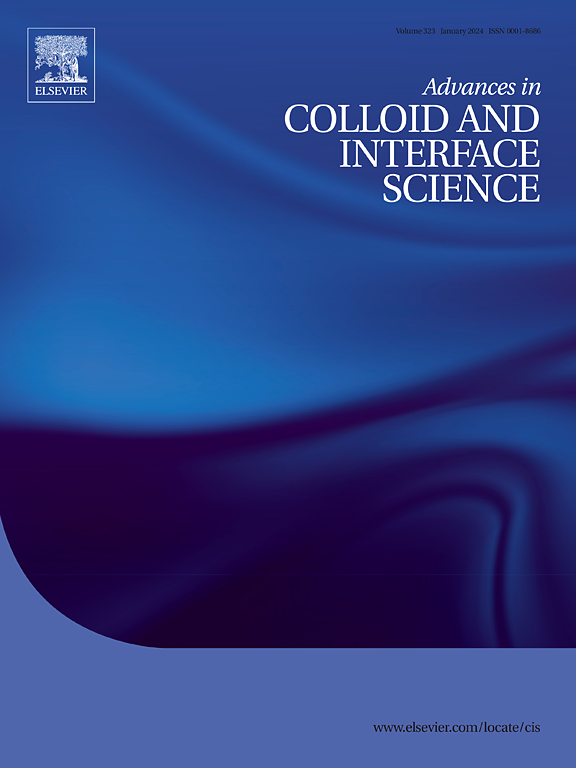基于重组弹性蛋白的纳米结构抗菌膜涂层
IF 15.9
1区 化学
Q1 CHEMISTRY, PHYSICAL
引用次数: 0
摘要
由于其独特的可切换特性,响应性生物材料在调节细胞表面相互作用方面的应用最近得到了探索。然而,利用合适的生物大分子合理设计表面以获得最佳的物理化学性能、生物相容性、细胞粘附性和防污性能是相当具有挑战性的。模拟树脂多肽(RMPs)本质上是一种无序的生物大分子,具有多刺激响应行为,包括可逆的双相热行为,形成自组装的纳米到微观结构。然而,对于基于rmp的纳米结构的形态特征及其对表面性能的影响的理解有限。因此,在本研究中,制备了一系列基于rmp的响应性纳米结构涂层(纳米凝聚体、纳米凝胶和纳米生物偶联物),以研究它们影响细胞表面相互作用的各种表面特性。利用原子力显微镜、中子散射和反射技术研究了它们的物理化学性质,如构象、堆积密度、电荷、粗糙度和刚度的影响。生物相容性和微生物学测试表明,这些纳米结构的可切换响应涂层可以应用于广泛的底物,以调节生物膜的形成和属性抗菌特性。开发的纳米涂层有潜力在许多领域找到应用,包括植入式医疗设备和药物输送。本文章由计算机程序翻译,如有差异,请以英文原文为准。

Nano-structured antibiofilm coatings based on recombinant resilin
The applications of responsive biomaterials for tuning cell-surface interactions have been recently explored due to their unique switchable characteristics. However, rational design of surfaces using suitable biomacromolecules to attain optimal physicochemical performance, biocompatibility, cell adhesion and anti-fouling properties is quite challenging. Resilin-mimetic polypeptides (RMPs) are intrinsically disordered biomacromolecules that exhibit multi-stimuli responsive behaviour, including reversible dual-phase thermal behaviour forming self-assembled nano- to microstructures. However, there is a limited understanding of the effect of morphological features of RMP-based nanostructures, and their influence on surface properties. Therefore, in this study, a family of responsive RMP-based nanostructured coatings (nano-coacervates, nanogels and nano-bioconjugates) are fabricated to investigate their various surface properties that influence cell-surface interactions. The effects of their physicochemical properties, such as conformation, packing density, charge, roughness, and stiffness, are investigated using atomic force microscopy, neutron scattering and reflectometry techniques. Biocompatibility and microbiological testing show that these nanostructured switchable responsive coatings can be applied to a wide range of substrates to modulate biofilm formation and attribute antimicrobial characteristics. The developed nanocoatings have the potential to find applications in many areas, including implantable medical devices, and drug delivery.
求助全文
通过发布文献求助,成功后即可免费获取论文全文。
去求助
来源期刊
CiteScore
28.50
自引率
2.60%
发文量
175
审稿时长
31 days
期刊介绍:
"Advances in Colloid and Interface Science" is an international journal that focuses on experimental and theoretical developments in interfacial and colloidal phenomena. The journal covers a wide range of disciplines including biology, chemistry, physics, and technology.
The journal accepts review articles on any topic within the scope of colloid and interface science. These articles should provide an in-depth analysis of the subject matter, offering a critical review of the current state of the field. The author's informed opinion on the topic should also be included. The manuscript should compare and contrast ideas found in the reviewed literature and address the limitations of these ideas.
Typically, the articles published in this journal are written by recognized experts in the field.

 求助内容:
求助内容: 应助结果提醒方式:
应助结果提醒方式:


